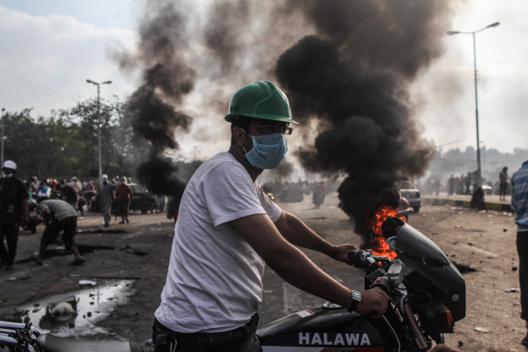 Editor’s note: On Friday night, security forces attacked the sit-in at Raba’a al-Adaweya in Nasr City, where supporters of deposed president Mohamed Morsi have been camped out for approximately three weeks. It is believed that clashes broke out after some of pro-Morsi protesters tried to block off a main road. While the Ministry of Interior claims to have only used tear gas and rubber bullets, eye-witnesses reported multiple live-bullet injuries. The Muslim Brotherhood placed the number of deaths at 120, with over 4,000 injuries. The Ministry of Health, however, reported thirty-eight deaths and over 200 injuries. Below is an eye-witness testimony, together with photographs taken by Egyptian photographer Mosa’ab al-Shamy who was at Raba’a from approximately 2:00 a.m. to 11:30 a.m.
Editor’s note: On Friday night, security forces attacked the sit-in at Raba’a al-Adaweya in Nasr City, where supporters of deposed president Mohamed Morsi have been camped out for approximately three weeks. It is believed that clashes broke out after some of pro-Morsi protesters tried to block off a main road. While the Ministry of Interior claims to have only used tear gas and rubber bullets, eye-witnesses reported multiple live-bullet injuries. The Muslim Brotherhood placed the number of deaths at 120, with over 4,000 injuries. The Ministry of Health, however, reported thirty-eight deaths and over 200 injuries. Below is an eye-witness testimony, together with photographs taken by Egyptian photographer Mosa’ab al-Shamy who was at Raba’a from approximately 2:00 a.m. to 11:30 a.m.
Warning: Some of the photographs are of a graphic nature.
I went to Raba’a al-Adaweya on July 27, after hearing that the Ministry of Interior was planning on clearing the sit-in. I planned to be there and document what happens, shall it get as ugly, as was the case when security forces attacked pro-Morsi protesters at the Presidential Guard a couple of weeks ago.
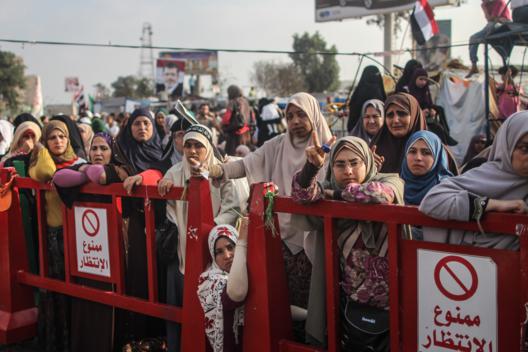
When I reached Nasr Street, the taxi I was in was stopped by a police cordon, made up primarily of special forces. We were asked to turn around and go no further. I left the cab, and managed to reach a second cordon further up Nasr Street, closer to Raba’a, where I saw many familiar faces amongst other journalists who had also been prevented entry. When I got there, I was told that the clashes had already begun but couldn’t tell what had sparked the violence. Unable to work, I walked back and took another cab hoping I’d be able to get into the sit-in from another entry, al-Hay al-Saba’a, which I succeeded in doing.
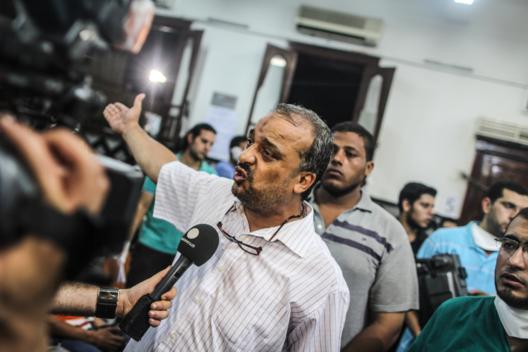
As soon as I got to Raba’a, a sit-in which I am quite familiar with due to frequent work visits, it was clear that it wasn’t an ordinary night. At 3 a.m., no one seemed to be asleep. A man, his voice clearly stressed, was on the loudspeaker on stage, asking everyone to ready themselves to ‘help the brothers out there.’ People cleared lanes in the midst of the teeming crowds. Before I could even think about why they were doing that, an ambulance rushed past and people started to scream as a dead body was unloaded off the back.
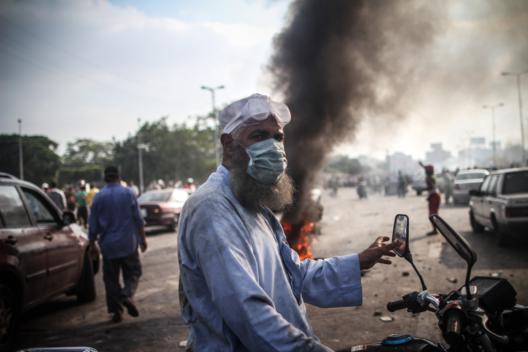
Trying to get closer to the clashes, Nasr Street was dark. White tear gas smoke billowed illuminated by the flashing ambulance lights and motorcycle flares, speeding up and down the road with casualties. There was the distant but continuous sound of live gunfire.
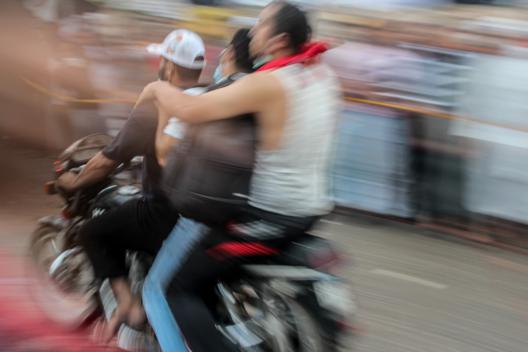
Morsi’s supporters were chanting Allahu Akbar, and yelling something about snipers. Concerned over how dark and unsafe it seemed, I returned to Raba’a and headed towards the makeshift hospital. The hospital was chaos. As I found my way through the mass of bodies and cameras in the hospital, it was becoming clear how the situation had worsened in just a few minutes. A doctor told me eight had been killed, and over 500 injured.

Doctors tried to clear beds for the incoming victims. Over the next hour I saw at least thirty cases of live-bullet injuries in the chest, leg and head. Few of them made it.
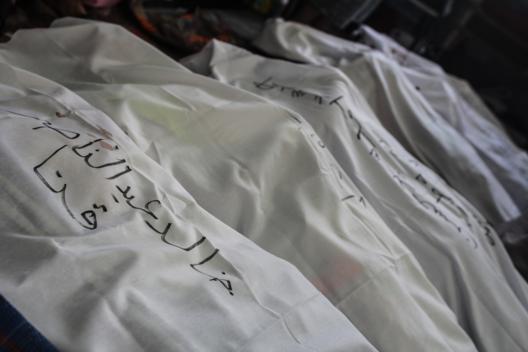
I would later go the ‘morgue,’ where they kept the bodies, and counted twenty men.
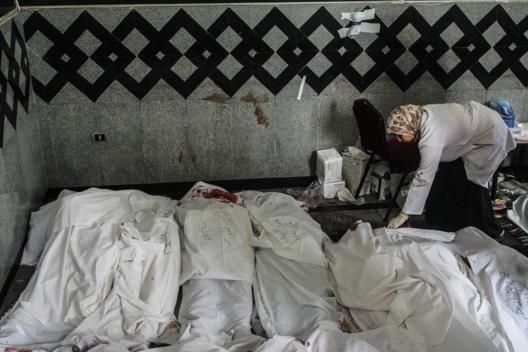
In my forty-minute stay, five new casualties would arrive, but one was deemed only brain-dead, leaving the number of dead I saw at twenty-four.
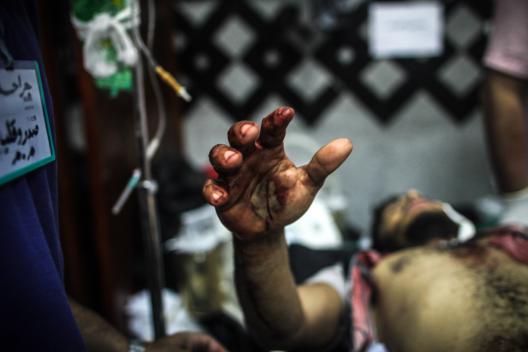
As the sun rose over Raba’a, it felt safer to head to the front-lines. I noticed Morsi supporters had set three lines of defense with brick walls. They crouched behind these walls as the bullets flew.
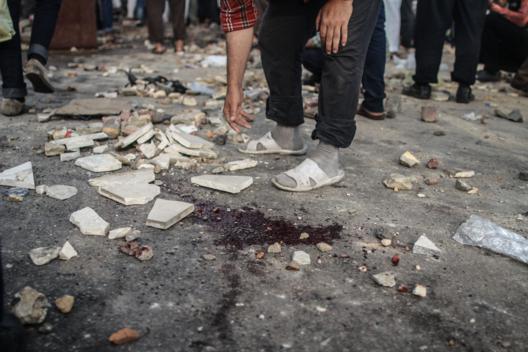
In the time that I spent in Raba’a, I saw that Morsi supporters were unarmed, except with rocks and fireworks, in addition to the occasional tear gas canister they would throw back at the police where it came from. I feel compelled, however, not to doubt the possibility of them being armed earlier at night when things were more vicious and chaotic, making observing things more difficult.
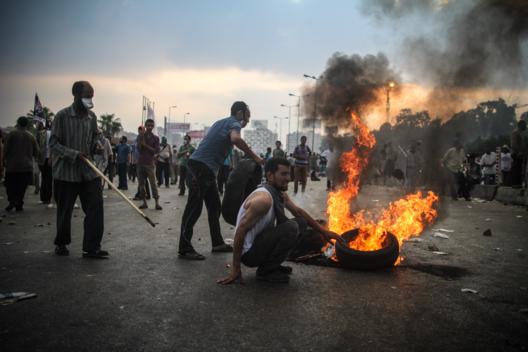
Injuries at the front lines were regular. Almost every couple of minutes, a man fell. Nasr Street is a very wide street, making it impossible to know where the bullets would come from. I personally saw a man get shot in the back of his head and drop dead, immediately, on the pavement he was standing on.

The police, I noticed, were accompanied by armed civilians by their side. These civilians seemed like a mix of residents, who I saw when I was at the police cordon at the start of the night, as well as what appeared to be paid thugs. Both the civilians and police fired at Morsi supporters while I was there. Helpless, Morsi supporters mostly just took cover, threw rocks and fireworks at the police before one was shot and carried away. This image repeated itself countless times.
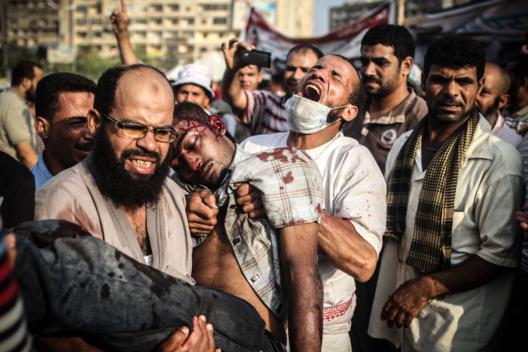
As for the military, I saw that they took no part in the assault. Their only involvement was very briefly, when the soldiers as the Sadat Memorial shot fire in the air and managed to distance the two sides, before they resumed again.
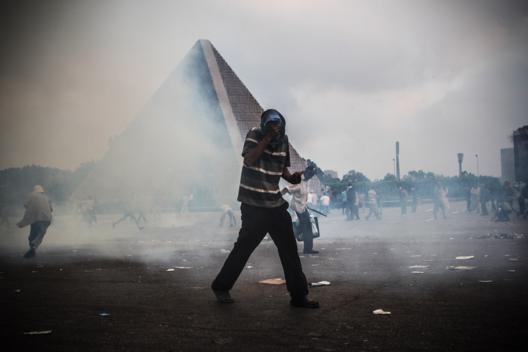
Mosa’ab Elshamy is a freelance journalist based in Cairo covering news, events and current affairs. He has provided photos for numerous publications and websites.
Image: Photos: Mosa'ab El Shamy
